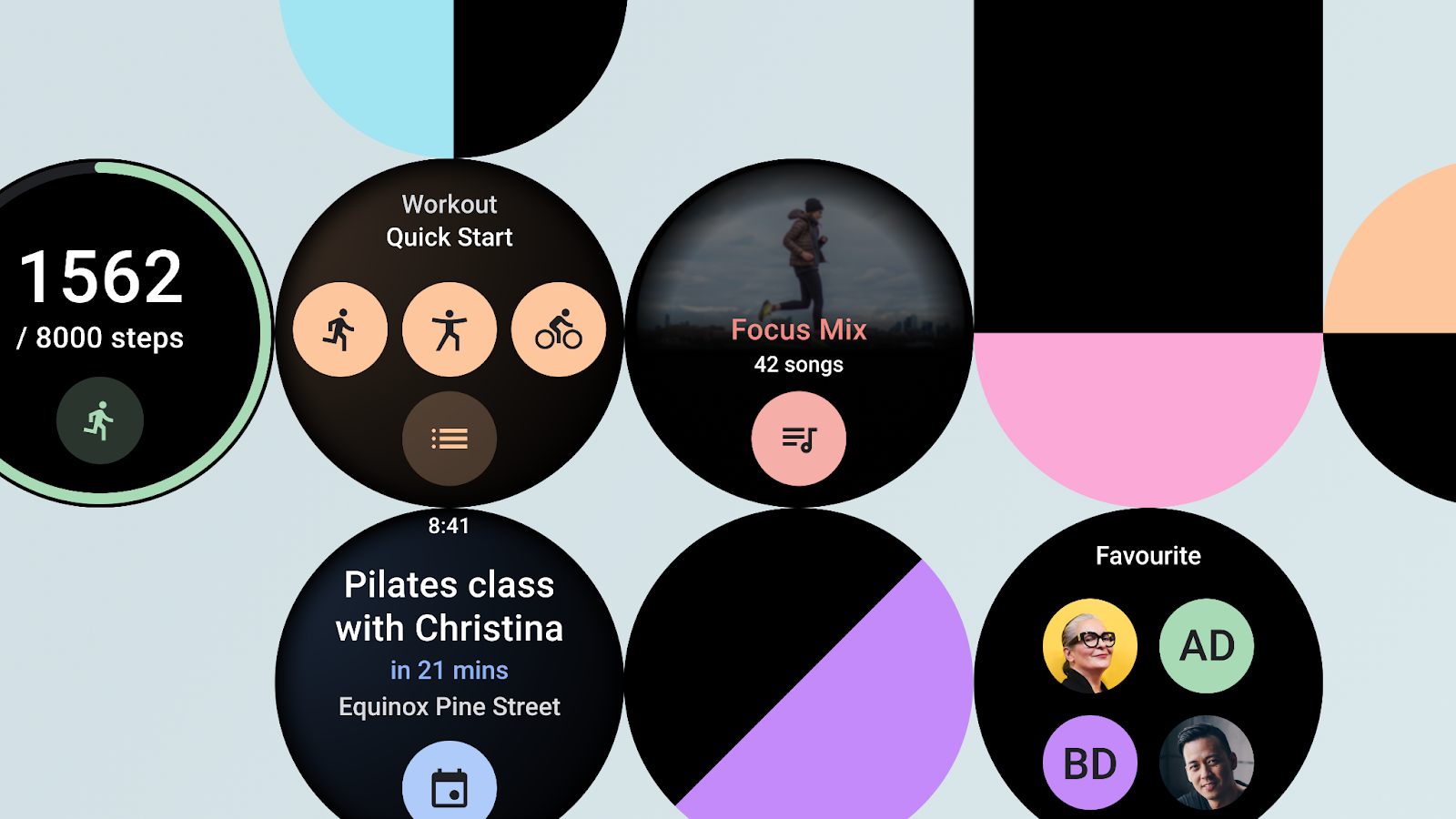
Starting in 2019, swiping left on Wear OS clock faces would show you “Tiles” for weather, news headlines, and more. Only first-party Google apps have ever been able to offer these glanceable pieces of information. That’s finally changing with Google now letting third-party developers create custom Wear OS Tiles.
Google today announced that the Jetpack Tiles library is in alpha. Developers can start creating custom Tiles now with today’s announcement explaining how end users will have access to them this spring after a “corresponding Wear OS platform update,” ,which should be in the vein of H MR2 (i.e. an H MR3-esque release).
Tiles can be designed for many use cases, like tracking the user’s daily activity progress, quick-starting a workout, starting a recently played song, or sending a message to a favorite contact. While apps can be immersive, Tiles are fast-loading and focus on the user’s immediate needs. If the user would like more information, Tiles can be tapped to open a related app on the watch or phone for a deeper experience.
Developer documentation on how to create them in Android Studio is available now, while Google offers best practices, including:
- Tiles are meant for glanceable information that users can read in a matter of seconds. Display only the most important content with clear information hierarchy.
- To safeguard the user’s battery, avoid elements that require frequent re-rendering.
- Save highly interactive experiences for your activities. However, you can link into those activities from your Tile.
- Avoid text like “x minutes ago” or “in x minutes” for past or future events as this requires frequent updates. Instead, display the actual start or end time or use a statement like “in the past.”
- Avoid long-running asynchronous work when providing a Tile’s layout and/or resources. Your Tile code should execute quickly.
- Consider allowing the user to tap on Tiles to learn more and take action in an overlay, where there is support for rich interactivity and the user can scroll for more information.
- If you have a large app that supports the user with multiple tasks, consider creating a Tile for each task. For example a fitness app might have a Goals Tile, and a Workout Activity Tile.
The last first-party Tiles introduced revamped weather and let users quickly start a breathe session.
More about Wear OS:
- [Update: Partially fixed] ‘Hey Google’ hotword on Wear OS has been broken for months
- TicWatch Pro S gives 8GB of storage to a Snapdragon 2100 Wear OS watch… for some reason
- Fossil paused Wear OS H MR2 update for Gen 5 watches to ‘iron out some issues’
FTC: We use income earning auto affiliate links. More.

Comments